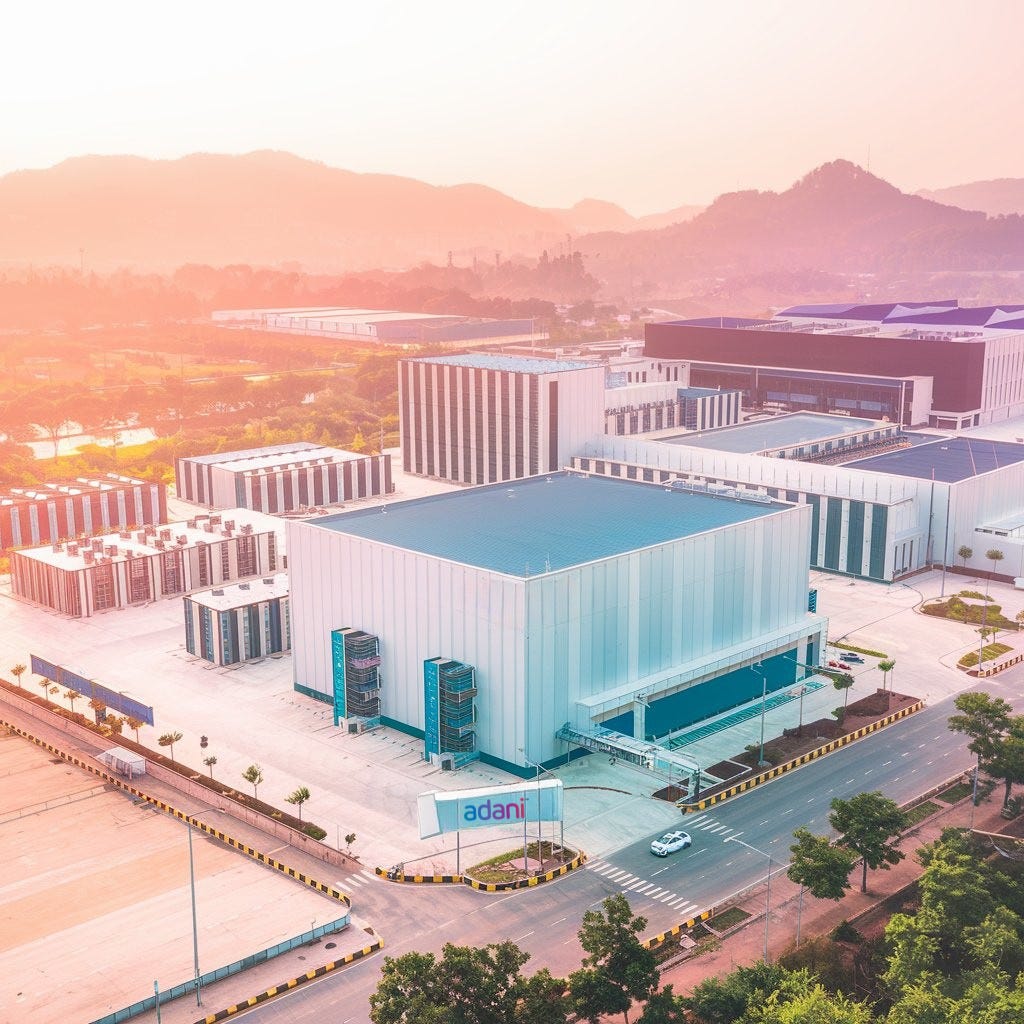What If Adani’s $10B AI Infrastructure Bet Turns India into a Compute Superpower?
Inside Adani’s plan to deploy 10GW of AI data centers, reshape India’s digital infrastructure, and position the country as a global compute powerhouse.
Welcome to Global Data Center Hub. Join 1700+ investors, operators, and innovators reading to stay ahead of the latest trends in the data center sector in developed and emerging markets globally.
India has the population, the demand, and the digital ambition.
What it hasn’t had until now is the compute capacity to match.
That’s about to change.
Adani Group is executing one of the most aggressive AI infrastructure buildouts anywhere in the world: a $10 billion plan to deploy 10 gigawatts of hyperscale data center capacity across India over the next seven years.
To put that in perspective, India’s entire operational capacity today is under 1 GW.
This isn’t a hedge. It’s a high-conviction bet. And it’s not just about data centers.
It’s about energy, sovereignty, capital structure and the attempt to turn India from a consumer of intelligence into a producer.
From Ports to Power to Compute
This initiative is the physical convergence of everything Adani already owns.
Power? Adani Green can generate 24/7 clean electricity at scale. Ports? Mundra, Navi Mumbai, and Vizag offer coastal access and low-latency fiber landing stations. Land? Acquired early, in states that provide capital subsidies and favorable permitting windows.
What’s being built is more than a hyperscale campus. It’s an AI utility.
The architecture is deliberate:
2 GW of capacity across Andhra Pradesh, Gujarat, and Tamil Nadu with firm PPAs.
Dedicated 400 kV transmission to avoid grid bottlenecks.
Sovereign cloud enclaves for government LLMs with MeitY compliance.
Onsite immersion cooling to slash water use by up to 40%.
Air-gapped infrastructure for defense, ports, and critical services.
40,000+ racks of Nvidia GB200-class compute, connected via Infiniband fabric.
Each asset is built to serve the dual goals of India’s AI mission: inference capacity for private-sector growth and secure, domestic control over state workloads.
This is not colocation. This is industrial-scale digital sovereignty.
The Real Moat Isn’t the Hardware
Every hyperscaler can buy GPUs. Every operator can lease land.
What few can replicate is the vertically integrated control Adani brings to the table.
The entire project is structured to de-risk power exposure traditionally the biggest constraint in India. Captive solar-wind hybrid farms are already under development. Battery firming is embedded into the site planning. And energy dispatch is designed for real-time carbon matching.
The result: ESG-aligned hyperscale compute at gigawatt scale.
And critically, Adani owns the grid lines.
That means faster energization, more predictable commissioning, and immunity from local curtailment a challenge that has stalled major builds in Singapore, Germany, and even Northern Virginia.
Where others are delayed, Adani can build.
Capital Discipline After the Crisis
After the Hindenburg short-seller storm in 2023, Adani Group was forced to reprice risk and rebuild credibility.
That’s visible in this rollout.
Rather than deploying $10B at once, the group is sequencing investment through:
Joint ventures (AdaniConneX with EdgeConneX),
Sovereign co-investors (GIC, QIA),
Sustainability-linked debt ($1.44B structured offshore),
And asset-level ring-fencing via state-level MoUs.
This is not shotgun growth. It’s phased, politically derisked, and balance-sheet aware.
The fact that Adani paused a $10B semiconductor venture in early 2025, while accelerating its data center push, signals one thing: this isn’t opportunism.
This is the core bet.
Strategic Implications
By 2030, Adani aims to commission 6–10 GW of capacity more than any single market in Southeast Asia.
The group expects this infrastructure to enable:
$2B+ in annual EBITDA from data center operations,
An eventual spinout of AdaniConneX via REIT listing,
And a $3–4B annual export market for India-hosted AI inference services driven by vertical models trained on Adani-owned logistics, energy, and healthcare data.
This is the infrastructure base India has been missing for decades.
A domestic stack that aligns with policy, partners with global hyperscalers, and satisfies ESG capital on every layer: grid, rack, and software.
If it succeeds, this will mark the moment India became a first-class AI market.
And Adani, for all its past volatility, will have repositioned itself not just as a logistics empire, but as the foundation of India’s intelligence economy.
You’re not just watching a company build data centers.
You’re watching India build its AI spine.
And one conglomerate is trying to own the entire vertebrae.

